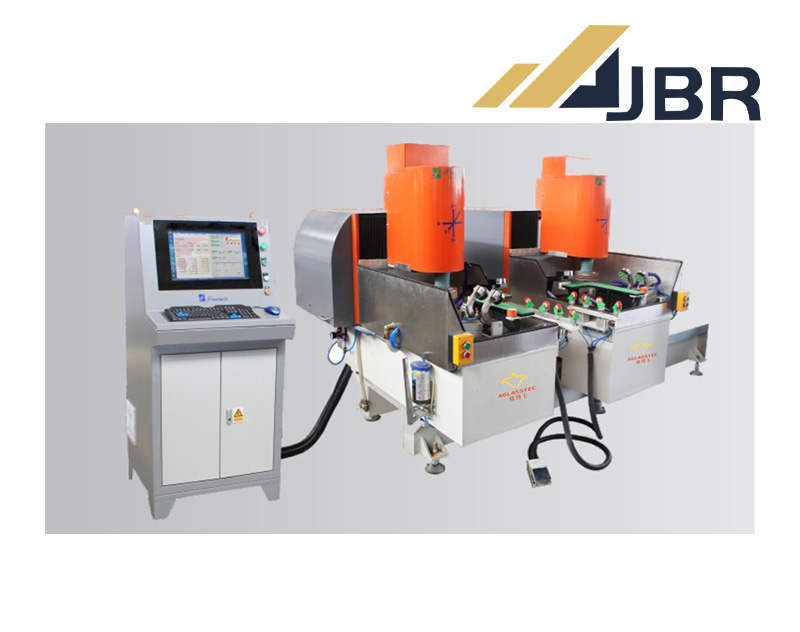INDUSTRY NEWS
What is the working principle and application of glass chamfering machine?
The working principle of glass chamfering machine is mainly embodied in automated processing, grinding wheel rotation, table adjustment, etc.; its applications include but are not limited to the construction industry, furniture industry, electronics industry and other fields.

The working principle of glass chamfering machine:
1. Automated processing: the automatic glass chamfering machine uses a high-precision control system, which is programmed to achieve precise control to ensure the accuracy of the chamfering size and processing efficiency. This equipment can automatically adjust the pressure and the feed speed of the grinding wheel, which is appropriately adjusted according to the thickness and hardness of the glass.
2. Grinding wheel rotation: The core technology of the glass chamfering machine is the use of high-speed rotating diamond grinding wheels for precision processing of glass. Diamond grinding wheels are particularly suitable for fine cutting and grinding of glass due to their extremely high hardness and wear resistance. The speed of the grinding wheel can be adjusted between 3,000 and 10,000 rpm to suit different processing needs.
3. Table Adjustment: During processing, the glass is fixed on a working table. This table can be adjusted to the size and shape of the glass to ensure that the grinding wheels can accurately handle every edge of the glass. Precise chamfering is also possible for special shapes of glass, such as round or irregularly shaped edges.
4. Precision control: Modern glass chamfering machines are equipped with advanced CNC systems, which are capable of micron-level (±0.02~±0.05mm) precision control, ensuring that the processed products meet high industrial standards.
5. Continuous batch production: the design of the equipment allows for continuous batch production, through the designed fixtures to achieve rapid product change and processing, greatly improving production efficiency and processing quality.
Applications of glass chamfering machine:
1. Construction industry: In the construction industry, whether it is large architectural glass, safety glass, or small decorative glass, furniture glass, all of them need to be processed by the glass chamfering machine for edge treatment, in order to improve the aesthetics and safety of the glass. This ensures smooth glass edges and reduces safety risks due to sharp edges during installation or use.
2. Furniture industry: In furniture manufacturing, especially furniture products containing glass elements, such as glass table tops and cabinet doors, chamfering can significantly improve the overall texture and safety of the furniture. The chamfered glass edges are less likely to hurt people, increasing the safety and aesthetics of the furniture.
3. Electronic industry: With the continuous pursuit of the appearance quality of scientific and technological products, glass chamfering machine in the electronic industry is also increasingly widely used. Mobile phone screens, TV screens, computer monitors, etc. need to go through a precise chamfering process to ensure that the edge of the glass is smooth and flawless, which is essential to enhance the product's sense of touch and visual effect.
4. Crafts manufacturing: For high-end glass crafts, such as decorative picture frames, glass sculptures, etc., chamfering is not only for safety, but also a kind of artistic processing needs. Precise chamfering process can enhance the overall beauty and value of the crafts.
5. Automotive industry: In the automotive industry, glass parts such as windows and sunroofs also need to be chamfered to ensure comfort and safety after assembly. This not only enhances the overall quality of the car, but also meets the demand of consumers for the refinement of car details.
Overall, glass chamfering machine not only realises the combination of high efficiency and precision in mechanical operation, but also demonstrates wide applicability and revolutionary importance in practical application. From construction to furniture, to the manufacture of electronic products, glass chamfering machine plays an irreplaceable role, which greatly promotes the technological progress of related industries and product quality improvement. This not only reflects the modern manufacturing industry's pursuit of mechanical precision, but also reflects the market's strong demand for high-quality products. With the continuous progress of technology and the expansion of application areas, the future development prospects of glass chamfering machine will be more broad.
